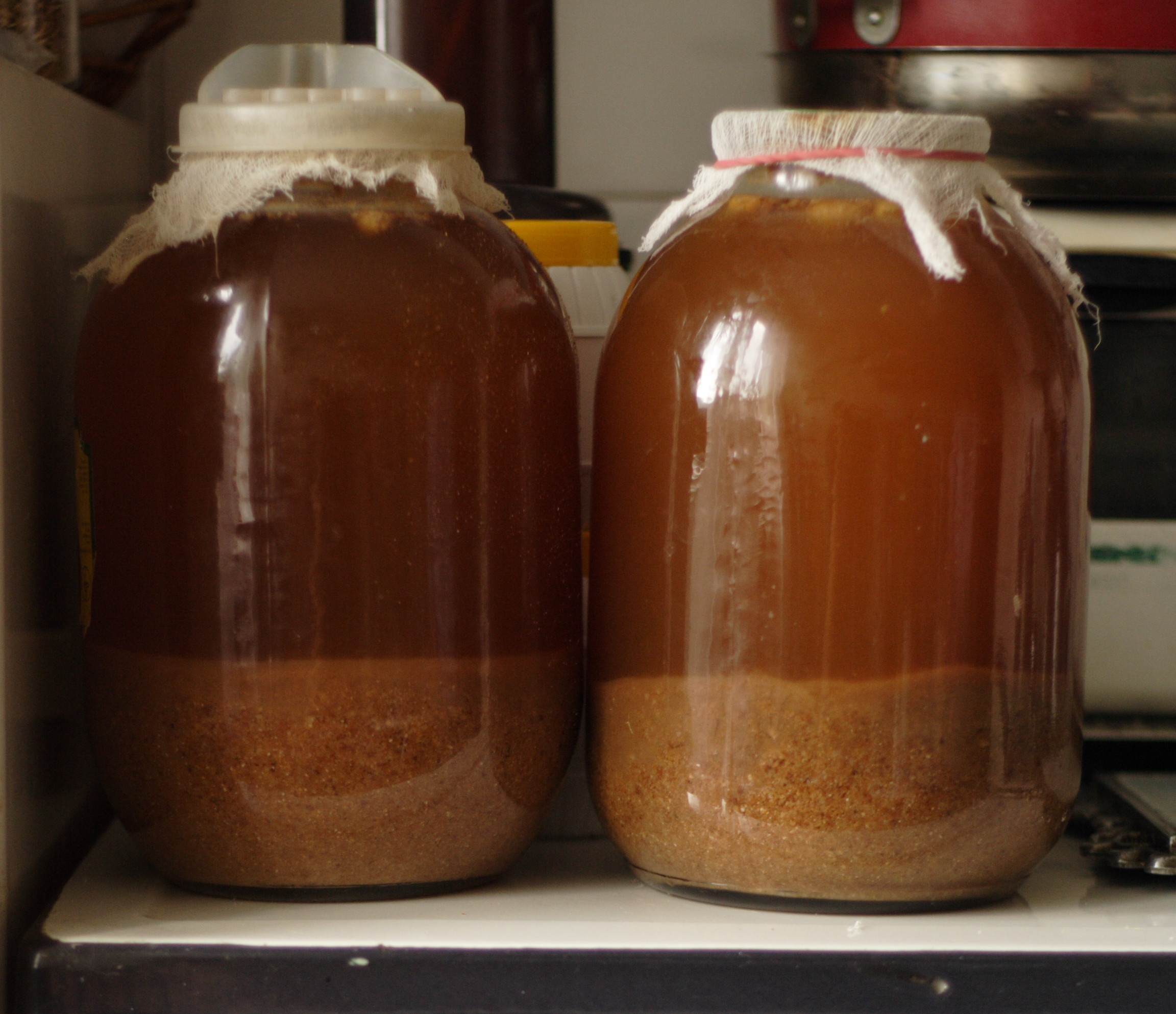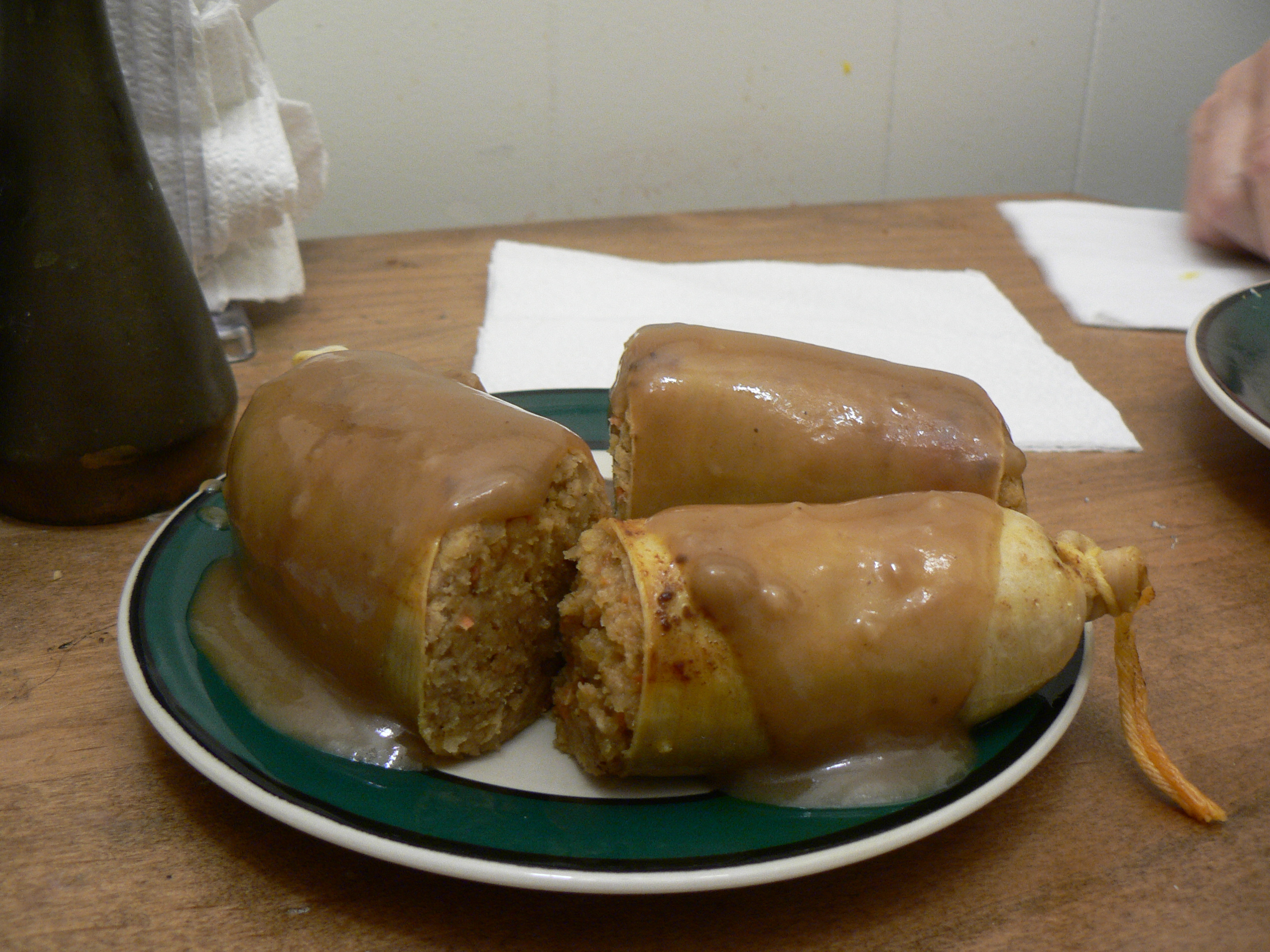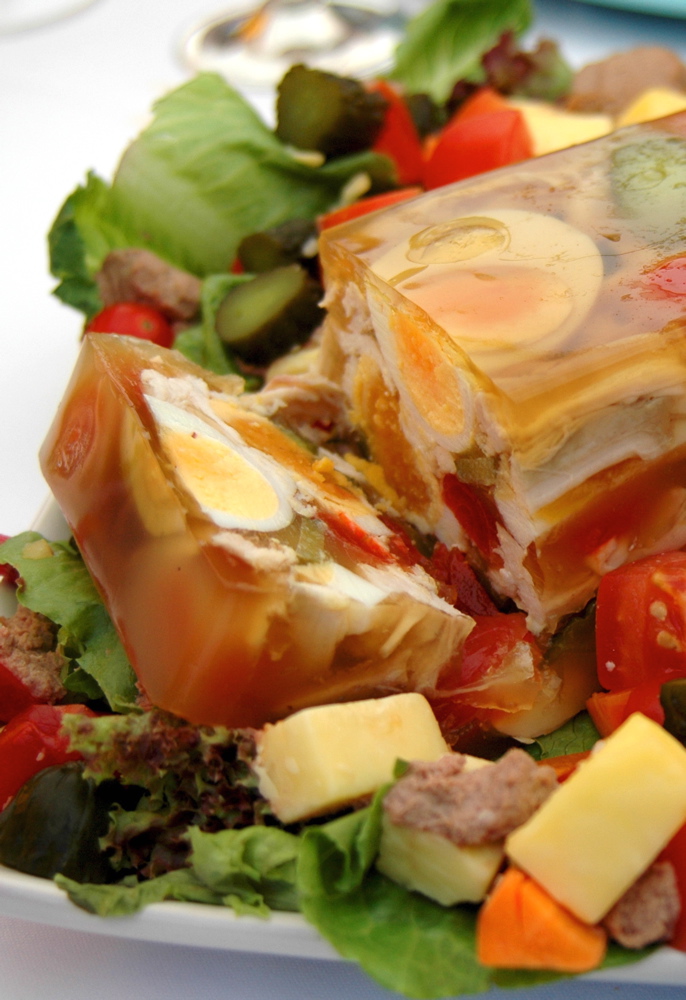|
Malanka
Malanka ( ua, Маланка, or "Shchedryi vechіr" or "Щедрий Вечір"; be, Шчодры вечар) is a Ukrainian and Belarusian folk holiday celebrated on 13 January, which is New Year's Eve in accordance with the Julian calendar (see Old New Year). Origins A Christianized folk tale of pagan origin, the story is based on the daughter of the creator god Praboh, whose four sons included Veles (the Devil), Yar- Yarylo (St. George), Rai (St. John), and Lad or Mir (Peace). His daughter Lada was mother Earth, who had two children: a son called the Moon and a daughter "Spring-May", later referred to as Mylanka because she was loving (мила). In a version of the myth of Hades and Persephone, Mylanka's evil uncle (the Devil) desired her presence in the underworld and abducted her one-day when the Moon was hunting. While Mylanka was gone, the Earth lacked the rebirth of spring, and once she was released from the vices of the Devil, flowers began to bloom and green ... [...More Info...] [...Related Items...] OR: [Wikipedia] [Google] [Baidu] |
Old New Year
The Old New Year or the Orthodox New Year is an informal traditional holiday, celebrated as the start of the New Year by the Julian calendar. In the 20th and 21st centuries, the Old New Year falls on January 14 in the Gregorian calendar. This traditional dating of the New Year is sometimes commonly called "Orthodox" because it harks back to a time when governments in Russia and Eastern Europe used the Julian calendar, which is still used by some jurisdictions of the Eastern Orthodox Church. The Eastern Orthodox Church's liturgical year actually begins in September. In Russia Although the Russian Soviet Federative Socialist Republic officially adopted the Gregorian calendar in 1918, the Russian Orthodox Church continued to use the Julian calendar. The New Year became a holiday that is celebrated by both calendars. As in most countries which use the Gregorian calendar, New Year's Day in Russia is a public holiday celebrated on January 1. On that day, joyous entertainment, firewor ... [...More Info...] [...Related Items...] OR: [Wikipedia] [Google] [Baidu] |
Melania The Younger
Melania the Younger ( 383 - 31 December 439) is a Christian saint and Desert Mother who lived during the reign of Emperor Honorius, son of Theodosius I. She is the paternal granddaughter of Melania the Elder. The Feast of Melania the Younger is held on 31 December (the Julian calendar's 31 December falls on 13 January on the Gregorian calendar). In Ukraine, by Orthodox Christians, Malanka ("Melania's Day") is celebrated on 13 January, and on 31 December by other Christians. Life Rome Melania was the only child of the rich and powerful Valerius Publicola (son of Melania the Elder) and his wife Caeionia Albina, both Christians, of the senatorial Valeria gens family of ancient lineage which was the pride of Rome. Her paternal and maternal relatives had held the highest offices of state with great distinction during the whole of the century, and Melania could even boast of a long line of imperial blood, most recently through Valerius Romulus (r. 308-309). She was married to her p ... [...More Info...] [...Related Items...] OR: [Wikipedia] [Google] [Baidu] |
Goat Guiding
The goat or domestic goat (''Capra hircus'') is a domesticated species of goat-antelope typically kept as livestock. It was domesticated from the wild goat (''C. aegagrus'') of Southwest Asia and Eastern Europe. The goat is a member of the animal family Bovidae and the tribe Caprini, meaning it is closely related to the sheep. There are over 300 distinct breeds of goat.Hirst, K. Kris"The History of the Domestication of Goats".''About.com''. Accessed August 18, 2008. It is one of the oldest domesticated species of animal, according to archaeological evidence that its earliest domestication occurred in Iran at 10,000 calibrated calendar years ago. Goats have been used for milk, meat, fur, and skins across much of the world. Milk from goats is often turned into goat cheese. Female goats are referred to as ''does'' or ''nannies'', intact males are called ''bucks'' or ''billies'', and juvenile goats of both sexes are called ''kids''. Castrated males are called ''wethers''. While ... [...More Info...] [...Related Items...] OR: [Wikipedia] [Google] [Baidu] |
Robert Klymasz
Robert Bohdan Klymasz (born May 14, 1936, Toronto, Canada) is a Ukrainian-Canadian folklorist. He was a pioneer in the field and published widely in the English language. Educated at the University of Toronto (Russian, 1957) under George Luckyj, the University of Manitoba (MA in Slavic Studies, under Jaroslav Rudnyckyj, 1960), Harvard University (1960–62), and Indiana University (PhD in Folklore Studies, 1971), he was a long-time Curator of the Slavic and East European Program at the Canadian Museum of Civilization, Ottawa. He has taught at several North American universities, served as executive director of the Ukrainian Cultural and Educational Centre, Winnipeg (1976–78), and for several years an adjunct professor at the Centre for Ukrainian Canadian Studies, University of Manitoba. During the 1950s, at the suggestion of Jaroslav Rudnyckyj, Klymasz undertook a research trip to Czechoslovakia and the USSR, specifically western Ukraine, to expand his knowledge of Slavonic stu ... [...More Info...] [...Related Items...] OR: [Wikipedia] [Google] [Baidu] |
Fatback
Fatback (also known as streak of lean or streak of fat) is a cut of meat from a domestic pig. It consists of the layer of adipose tissue (subcutaneous fat) under the skin of the back, with or without the skin (pork rind). Fatback is "hard fat" and is distinct from the visceral fat that occurs in the abdominal cavity which is called "soft fat" and is used to produce leaf lard. Like other types of pig fat, fatback may be rendered to make a high-quality lard. It is one source of salt pork. Finely diced or coarsely ground fatback is an important ingredient in sausage making and in some meat dishes. Fatback is an important element of traditional charcuterie. In several European cultures it is used to make specialty bacon. Containing no skeletal muscle, this bacon is a delicacy. At one time fatback was Italy's basic cooking fat, especially in regions where olive trees are sparse or absent, but health concerns have reduced its popularity. However, it provides a rich, authentic ... [...More Info...] [...Related Items...] OR: [Wikipedia] [Google] [Baidu] |
Salo (food)
Salo or Slanina (Russian and Ukrainian: сало, Belarusian: сала, Hungarian: szalonna, Polish: słonina, ro, slănină, Czech and Slovak: slanina, Carpatho-Rusyn: солонина/solonyna, lt, lašiniai, Bulgarian and Serbo-Croatian: сланина/slanina) is an Eastern European food consisting of cured slabs of fatback with or without skin. It is commonly eaten and known under different names across Eastern and Southeastern Europe, and is traditional to multiple national cuisines in the region. It is usually dry salt or brine cured. The East Slavic, Hungarian and Romanian variety is sometimes treated with paprika or other seasonings, while the South and West Slavic version is often smoked. The Slavic word "salo" or "slanina" as applied to this type of food is often translated to English as "bacon" or "lard". Unlike lard, salo is not rendered, and unlike bacon, salo also has little or no lean meat. It is similar to Italian ''lardo'', the main differences being th ... [...More Info...] [...Related Items...] OR: [Wikipedia] [Google] [Baidu] |
Kvas
Kvass is a fermented cereal-based low alcoholic beverage with a slightly cloudy appearance, light-brown colour and sweet-sour taste. It may be flavoured with berries, fruits, herbs or honey. Kvass stems from the northeastern part of Europe, where the grain production is thought to have been insufficient for beer to become a daily drink. The first written mention of kvass is found in the ''Primary Chronicle'', describing the celebration of Vladimir the Great's baptism in 996. In the traditional method, kvass is made from a mash obtained from rye bread or rye flour and malt soaked in hot water, fermented for about 12 hours with the help of sugar and bread yeast or baker's yeast at a room temperature. In industrial methods, kvass is produced from wort concentrate combined with various grain mixtures. It is a popular drink in Russia, Ukraine, Poland, Baltic countries, Finland and some parts of China. Terminology The word ''kvass'' is ultimately from Proto-Indo-European base *''k ... [...More Info...] [...Related Items...] OR: [Wikipedia] [Google] [Baidu] |
Pork Sausage
A sausage is a type of meat product usually made from ground meat—often pork, beef, or poultry—along with salt, spices and other flavourings. Other ingredients, such as grains or breadcrumbs may be included as fillers or extenders. When used as an adjective, the word ''sausage'' can refer to the loose sausage meat, which can be formed into patties or stuffed into a skin. When referred to as "a sausage", the product is usually cylindrical and encased in a skin. Typically, a sausage is formed in a casing (sausage), casing traditionally made from Gut (anatomy), intestine, but sometimes from synthetic materials. Sausages that are sold raw are cooked in many ways, including pan-frying, broiling and barbecuing. Some sausages are Cooking, cooked during processing, and the casing may then be removed. Sausage-making is a traditional food preservation technique. Sausages may be preserved by curing (food preservation), curing, Drying (food), drying (often in association with ... [...More Info...] [...Related Items...] OR: [Wikipedia] [Google] [Baidu] |
Kishka (food)
Kishka or kishke ( Belarusian кішка, ''kishka''; Czech Republic ''jelito''; Slovakia ''krvavnica''; pl, kiszka / kaszanka; Romanian ''chişcă''; Yiddish קישקע : kishke; Hebrew קישקע; Russian ''кишка''; Ukrainian ''кишка''; also sl, kašnica; Lithuanian ''vėdarai''; Hungarian ''hurka'') refers to various types of sausage or stuffed intestine with a filling made from a combination of meat and meal, often grain or potato. The dish is popular across Eastern Europe as well as with immigrant communities from those areas. It is also eaten by Ashkenazi Jews who prepare their version according to kashrut dietary laws. The name is Slavic in origin, and literally means "gut" or "intestine." It may be related to the Ancient Greek word κύστις : kystis, "bladder" as both words refer to a hollow viscus. Description One Eastern European kishka type is ''kaszanka'', a blood sausage made with pig's blood and buckwheat or barley, with pig intestines used as ... [...More Info...] [...Related Items...] OR: [Wikipedia] [Google] [Baidu] |
Aspic
Aspic or meat jelly () is a savory gelatin made with a meat stock or broth, set in a mold to encase other ingredients. These often include pieces of meat, seafood, vegetable, or eggs. Aspic is also sometimes referred to as ''aspic gelée'' or ''aspic jelly''. In its simplest form, aspic is essentially a gelatinous version of conventional soup. History The 10th-century '' Kitab al-Tabikh'', the earliest known Arabic cookbook, contains a recipe for a fish aspic called . This dish was made by boiling several large fish heads with vinegar, parsley, cassia, whole onions, rue, black pepper, ginger, spikenard, galangal, clove, coriander seeds, and long pepper. The resulting dish was then colored with saffron to give it a "radiant red" color. The cooked fish heads and seasonings were then removed from the cooking liquid before the tongues and the lips were returned to steep until the liquid and everything in it had cooled and gelatinized. According to one poetic reference by Ibra ... [...More Info...] [...Related Items...] OR: [Wikipedia] [Google] [Baidu] |
Varenyky
Pierogi are filled dumplings made by wrapping unleavened dough around a savory or sweet filling and cooking in boiling water. They are often pan-fried before serving. Pierogi or their varieties are associated with the cuisines of Central, Eastern and Southeastern Europe. Dumplings most likely originated in Asia and came to Europe via trade in the Middle Ages. The widely-used English name pierogi was derived from Polish. In some parts of Eastern Europe they are known as varenyky''.'' Pierogi are also popular in modern-day American and Canadian cuisine, where they are sometimes known under different local names. Typical fillings include potato, cheese, quark, sauerkraut, ground meat, edible mushrooms, and/or fruits. Savory pierogi are often served with a topping of sour cream, fried onions, or both. Terminology The English word "pierogi" comes from Polish ' , which is the plural form of ' , a generic term for filled dumplings. It derives from Old East Slavic (') and further f ... [...More Info...] [...Related Items...] OR: [Wikipedia] [Google] [Baidu] |




